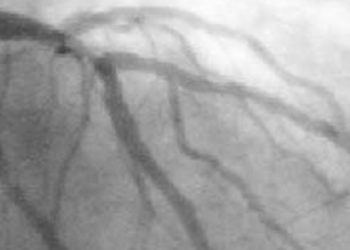Hospital procedure volume should not be used as a measure of surgical quality
Image: CC/US Navy
Key study points:
1. Hospital procedure volume is not a significant independent predictor of mortality for pancreatectomy, AAA repair, esophagectomy, or CABG.
2. Patient mortality risk in these procedures is mainly associated with patient characteristics like comorbidities and, thus, procedure volume alone should not be used as a proxy for surgical quality.
Primer: Procedure volume has been utilized as a proxy for institutional competence with regards to specific surgical procedures. The prevailing wisdom was that higher volume hospitals would have more established infrastructure and stream-lined systems based approached, in addition to more experienced surgeons, for tackling specific operations and improving outcomes. This relationship between hospital procedure volume and surgical outcomes has been validated and studied extensively. However, there have been many critiques of this relationship, most centered on the conventional multi-variable regression modeling utilized, which fails to account for clustering of events within hospitals and will tend to overestimate the volume-outcome relationship. The Leapfrog Group, a consortium of private organizations and public agencies that purchase healthcare, and the Agency for Healthcare Reseach and Quality (AHRQ) decided to reevaluate this relationship using data from the National Inpatient Sample Database within the context of 4 procedures: pancreatic resection, abdominal aortic aneurysm repair, esophageal resection, and coronary artery bypass grafting.
-
Milstein A, Galvin RS, Delbanco SF, et al. Improving the safety of health care: the leapfrog initiative. Eff Clin Pract. 2000;3:313–316.
-
Greenland S. Dose-response and trend analysis in epidemiology: alternatives to categorical analysis. Epidemiology. 1995;6:356–365.
-
Urbach DR, Austin PC. Conventional models overestimate the statistical significance of volume-outcome associations, compared with multilevel models. J Clin Epidemiol. 2005;58:391–400.
This [retrospective] study examined discharge data for 261,412 patients, using hierarchical general linear modeling to assess the relationship between volume and mortality. This methodology was chosen to avoid overestimation of the statistical significance of volume-outcome associations traditionally encountered in conventional analysis. Analysis was adjusted for patient demographics, comorbid disease, and elective procedure status. Unadjusted mortality rates were pancreatic resection (4.7%), abdominal aortic aneurysm (12.7%), esophageal resection (5.8%), and coronary artery bypass grafting (2.2%). Hospital volume was not associated with mortality for any of the 4 operations, however patient variables were strongly associated including age, elective status, female gender and comorbidities (hypertension, congestive heart failure, renal failure, malnutrition, etc.).
In sum: his large study sought to examine the true impact of hospital volume on mortality rates for four common complex surgical procedures in the most statistically rigorous way possible to account for the shortcomings of prior studies that failed to account for clustering of events within specific institutions. This study corrects some very specific statistical weakness of prior studies. It treats volume as a continuous, rather than categorical variables. The study also uses hierarchical generalized linear modeling, which accounts for the clustering of events within specific hospitals by allowing for the relationship between volume and mortality to vary across different institutions. The authors conclude that relying simply on volume measures as proxies for purported quality of surgical care neglects to account for the multidimensional institutional experience that may be being driven by other variables besides shear volume. Using surgical volume alone also fails to account for more significant predictors of mortality identified in this study including age, sex, elective status, and comorbidities. This study prompts a reevaluation of hospital volume as a quality predictor and encourages a more nuanced approach to statistical analysis and consideration of hospital volume in examining hospital quality.
Click to read the study in the Annals of Surgery
By AH
© 2012 2minutemedicine.com. All rights reserved. No works may be reproduced without written consent from 2minutemedicine.com. DISCALIMER: Posts are not medical advice and are not intended as such. Please see a healthcare professional if you seek medical advice.




![2MM: AI Roundup- AI Cancer Test, Smarter Hospitals, Faster Drug Discovery, and Mental Health Tech [May 2nd, 2025]](https://www.2minutemedicine.com/wp-content/uploads/2025/05/Untitled-design-350x250.png)